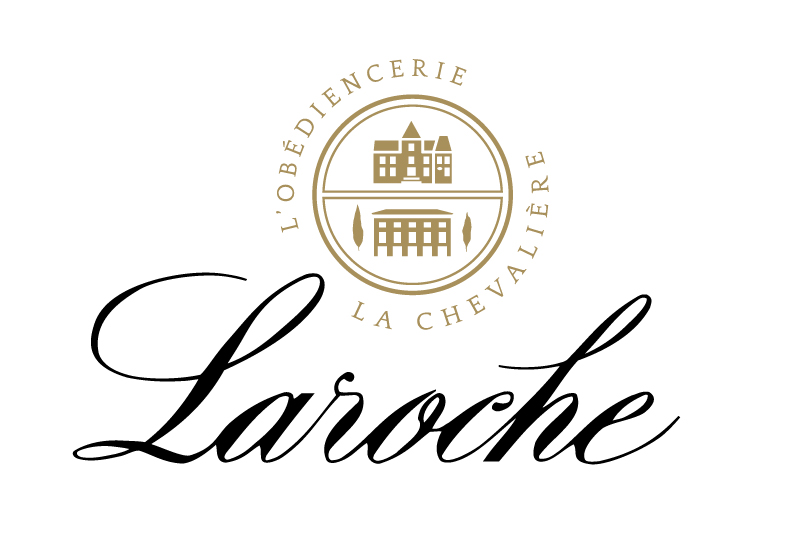Domaine Laroche, Chablis Grand Cru Les Blanchots `Réserve de l'Obédience`


Vintage: 2022
| Vintage | Product Code | Format | Closure | Availability |
|---|---|---|---|---|
| 2022 | LA510B22 | 6 x 75 | Natural Cork | Available |
Producer
Domaine Laroche is based in ‘L’Obédiencerie’, a former monastery in the village of Chablis where wine has been made for over 1,000 years. Despite their impressive history, Domaine Laroche is dynamic, and a modern outlook permeates everything they do. They consistently produce impeccable wines, defined by the Chablis hallmark of crystalline purity and racy acidity.
Domaine Laroche’s vineyard ownership notably sets them apart. Chablis is a fragmented region, and it is uncommon for producers to own large vineyard holdings. However, Domaine Laroche owns 90 hectares of vines in the appellation, including 21 hectares of 1er Cru and six hectares of Grand Cru vineyards. In addition to these vineyards, the domaine has developed long-standing purchasing partnerships with 40 small growers and works closely with them on their vineyard management. This historic domaine continues to make and mature their 1er and Grand Cru wines in the monastery's original cellars.
Domaine Laroche takes a meticulous approach to winemaking under the stewardship of their technical director and winemaker Romain Chevrolat. Despite being only 30 years old, Romain already has an impressive CV, including a stint at Domaine de la Romanée-Conti. Romain’s philosophy centres on the notion that to create the purest expression of Chablis, the domaine must first focus on their vineyards. As a result, Domaine Laroche has implemented sustainable viticulture practices, farming without artificial pesticides or herbicides. They have planted cover crops to improve soil water retention and minimise erosion on the steeper slopes, embrace biodynamic principles in their Grand Cru parcels and support programmes to protect biodiversity. This includes installing beehives in the Vaudevey Valley and working closely with a Burgundian bird protection charity to reintroduce endangered species of owls to the area. In the winery, they ferment their wines with indigenous yeast and embrace a minimal intervention approach.
Honouring the patron saint of Chablis, the ‘Saint Martin’ blends from Domaine Laroche’s best Chablis Villages sites. 15% is fermented in used oak barrels, adding texture to the palate and complementing the quintessential Chablis crystalline acidity. The ‘Essence des Climats’ is another example of Romain’s blending skills, this time utilising various Chablis 1er Crus planted on the region's famed Kimmeridgian clay soils. The 1er Cru ‘Vaudevey’ conveys this remarkable site's unique sense of place, characterised by vivacity and freshness. This steep east-southeast-facing vineyard is bathed in the morning sun before being more shaded in the afternoon, resulting in a slower ripening of the grapes and a wine characterised by freshness.
Sitting atop the Laroche quality hierarchy is the ‘Réserve de l’Obédience’ Grand Cru ‘Les Blanchots’, which blends the finest parcels from within Domaine Laroche’s four hectares of Grand Cru ‘Les Blanchots’. It is only produced in the best vintages.
Vineyards
The ’Blanchots’ Grand Cru is named after Domaine Laroche's ancient monastery in the heart of Chablis, where the wine is cellar. The domaine owns 4.5 hectares of vines in this 12-hectare vineyard, which is famed for its ability to produce fragrant wines with understated elegance. The steep, south-southeast facing slope ensures optimal sun exposure.
Vintage
2022 was a generous vintage, with yields nearly double that of 2021. Early April frosts were followed by a hot, dry summer with intermittent August rainfall that ensured excellent vine development. Careful canopy management was key to mitigating the effects of water stress. Harvest started earlier than usual, from the end of August through to early September, to help preserve the grapes' acidity. The resulting wines are deeply flavoured and vibrant, with exceptional ageing potential.
Vinification
This is a wine that is only produced in the best vintages. The grapes were hand-harvested and meticulously sorted before pressing in a pneumatic press. After fermentation, the wine was aged for six months in oak barrels of varying sizes. 70-barrel samples are then tasted and assessed according to concentration, richness and potential for longevity, with only the finest examples being used in the blend.
Tasting Notes & Technical Details
Deep lemon in colour, the nose is defined by intense notes of marmalade, dried jasmine and toasted brioche notes. The palate is rich, with a subtly creamy texture complemented by vibrant acidity and a touch of flinty minerality.
Alcohol (ABV)
12.5%
Other wines from this producer
Producer | Wine | Product Code | Features | Style | |
|---|---|---|---|---|---|
| Domaine Laroche | Chablis 1er Cru `Les Vaillons` Vieilles Vignes | LA506 | W | Factsheet | |
| Chablis Grand Cru `Les Blanchots` | LA508 | W | Factsheet | ||
| Chablis Grand Cru `Les Clos` | LA509 | W | Factsheet | ||
| Chablis 1er Cru `Côte de Léchet` | LA527 | W | Factsheet |